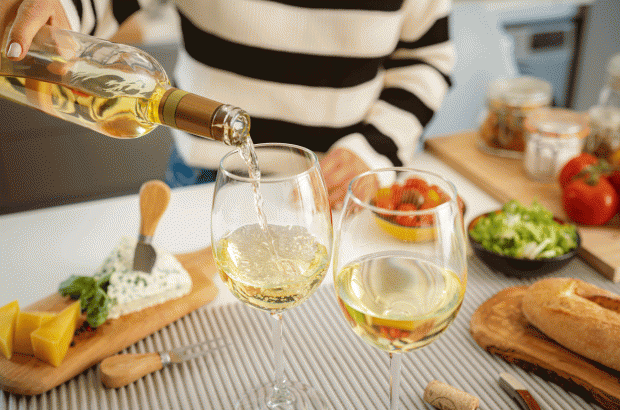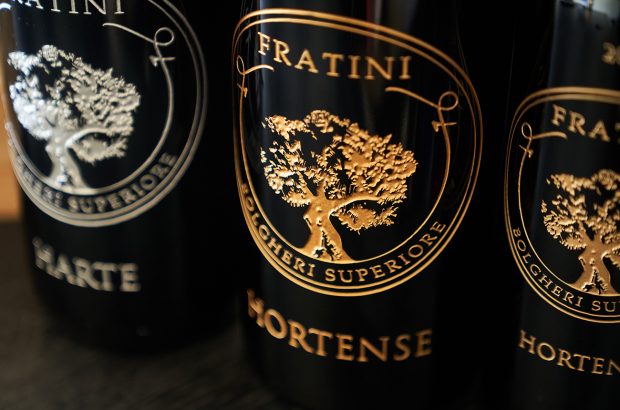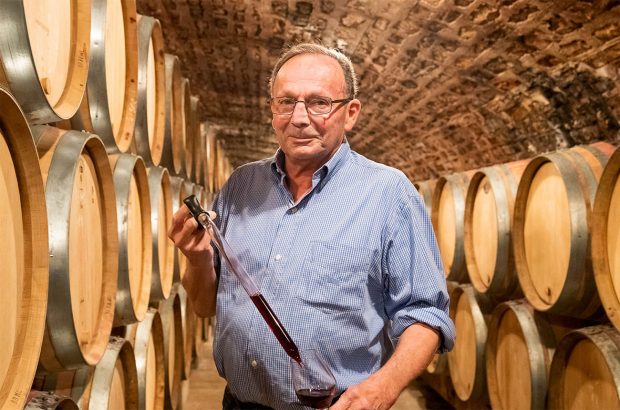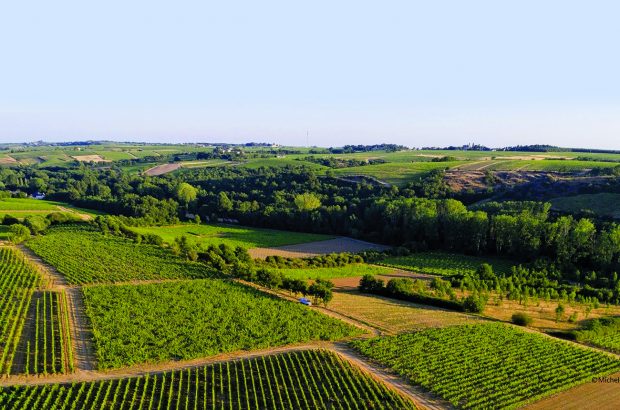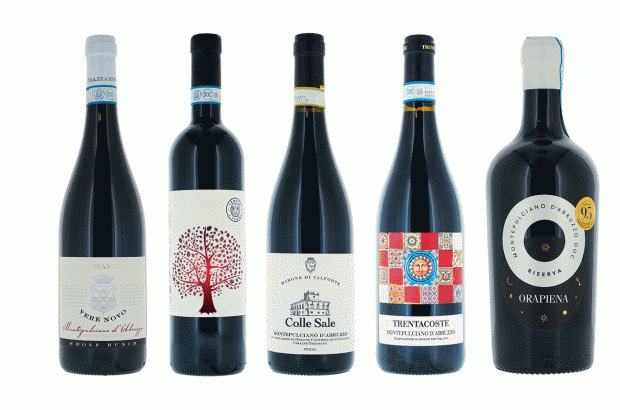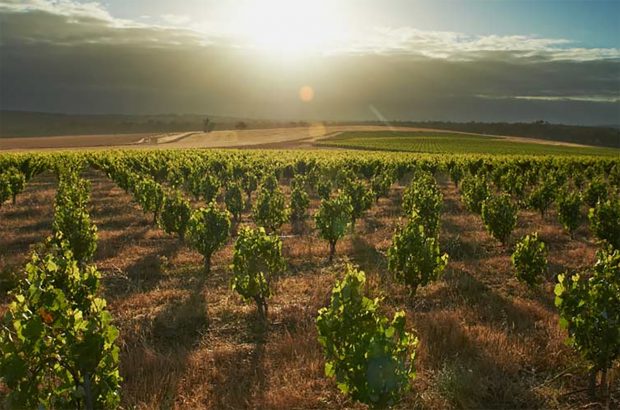It’s never easy to taste and judge a sweet wine at an early stage, so the Union des Grands Crus Tasting in the spring is especially tough on the great Sauternes. The wines are often cloudy and the final assemblages sometimes uncompleted. In addition to these problems, it is always difficult to judge Guiraud against its neighbours due to the higher than usual proportion of Sauvignon in the vineyard. For these reasons, I asked Xavier Planty, whose stewardship began in 1983, if I could spend half a day with him in April to do a vertical tasting of the wines.
Matching Sauternes and Barsac with food
The condition of the property when the Narby family bought it in 1981 can only be described as lamentable. The ravages inflicted by the occupying German forces during the Second World War had not been made good. The whole place was neglected and the wines were vinified and aged in concrete vats.
Obviously, very fine wines were made in the years leading up to the 1855 classification, since Guiraud was classified (under the name of Château Bayle) in seventh place among the nine premiers crus. But in 1846 Charles Cook had placed it immediately after Yquem, while in another unofficial classification of 1867 Guiraud was placed third.
So to the present, and the Narby purchase. Frank Narby is an Egyptian-born ship owner who lived in Canada and still does. He installed his son Hamilton, who set about renovating the château, the chais and the vineyard. In 1983 Planty arrived, but in 1986 disagreements between father and son led to Hamilton’s departure. Xavier Planty has had sole charge since, keeping Frank Narby abreast of all developments. It is clear that Narby’s faith in Planty has been amply repaid.
Guiraud’s progress can be charted on several fronts. While the potential vineyard area of 100 hectares makes this one of the largest estates in Sauternes, the 1983 crop came from only 43ha. By the 1999 harvest there were 84 out of a potential 85ha of Sauternes AC vineyard. In addition there are 15ha only entitled to the Bordeaux AC, of which 13 are under vine, and from which the dry white wine ‘G’ is produced. In 1983, the old Rival vineyards had for some years been tended using herbicides. Planty judges that they cannot be returned to traditional working because too much of the root system is near the surface and would be damaged by ploughing. However, all new plantings are now traditionally worked.
The use of barrel fermentation has gradually been expanded. In 1988 one-third was barrel fermented, the large 1990 crop was 45% barrel fermented, and since 1992 the whole crop has been. A pneumatic Bucher press was introduced for the 1997 vintage, and the final stage in the renovations came with the completion of new chais in time for the 1999 harvest, which incorporates an installation of underground vats and a pressure system to eliminate pumping.
Now the must goes by gravity from the press into the vats where it is cooled and settled, before being transferred to the barrels under pressure. Under the old system it had to be pumped three times between the press and the cask.
Any wine made from botrytis-affected grapes, such as Sauternes, is very much a law unto itself. Whereas dry white wines are today very technical wines, and red wines can be manipulated once in the chais, these great sweet wines are basically made in the vineyard, as they always have been. Here the expertise is in vineyard management that delivers perfectly healthy ripe grapes for the botrytis spores to begin their work. It is important to emphasise that the grapes must be fully ripe if good Sauternes is to be made.
Botrytis cinerea, to give it its full name, is a fungus that thrives in the warm, humid conditions prevalent here in autumn. The fungus dehydrates the berries, concentrating the sugar content. Since the spread of the fungus, even in the same bunch, is usually gradual and uneven, harvesting is especially critical. Depending on the conditions of the year, skilled local pickers pass through the vineyard between three and six times, picking only affected grapes. At Guiraud, special attention is paid to cleaning the vine at the same time to eliminate damaged or unripe grapes, thus helping to ensure the healthy evolution of the remaining grapes. Once the grapes are safely in the chais and the must in the barrel to begin its slow fermentation, it is nature not man who is master.
For the tasting Planty provided a table (overleaf) setting out the alcohol level, residual sugar in grams per litre, total acidity and yield in hectolitres per hectare. These should be read in conjunction with my tasting comments. Two general points stand out. Here, unlike a normal red or dry white wine, the best vintages tend to produce the highest yields. Then the balance between the alcohol and sugar, on the one hand, and the sugar and acidity on the other, is of prime importance. 1990 is the classic example.
1983
Compared with the best of the vintage, 1983 Guiraud looks old. The concentration and fruit are good, and on the palate it is rich and sweet, but a touch of tarriness shows its age, and it is losing freshness. There is a lack of complexity. An honourable effort given the problems Planty faced in his first vintage.
1985
Altogether better, despite being an odd year. There were no fewer than eight tris and harvesting went on until December 19th. Due to the dry conditions, there was little botrytis but very ripe grapes. The wine has marked lanolin and fruit, and real concentration on the palate. It seems fresher and sweeter than 1986 with a lovely balance and elegance, but less complexity than in great vintages.
1986
Shows huge progress, with its wonderfully honeyed fruit, touch of orange zest and freshness. But it began to go tarry in the glass. The palate shows real concentration and much more complexity than 1983. It is now perfectly mature, with a long flavour.
1988
Marks the beginning of a remarkable trio of outstanding vintages for Sauternes. Like the 1989, the bouquet is elegant and fresh, with floral notes. It seems less concentrated and certainly less evolved than the 1986. The flavour has beautiful balance, suggesting a long slow maturation, and is marked by a lovely fresh, pure fruit and great breed. Highly enjoyable now but still improving.
1989
Has a bouquet of lovely honeyed fruit. This is fresh, concentrated, and reminiscent in style to 1986, but less evolved. The flavour is superb, the great richness marked by lovely complex candied fruit – much richer than 1988. This is a majestic wine, perfect to drink now but with a long life potential.
1990
Stands apart with its much deeper colour: shades here of 1937, 1929 and 1921. There is an astonishing honeyed bouquet, with a complex array of candied fruit and acaccia blossom – everything proclaims one is in the presence of a great wine. The stunning flavour matches the nose: rich and chewy in texture, yet fresh and harmonious after 10 years. Just glance at the acidity. The wine has a quite different dimension to 1989, yet it also has the balance of a great wine. When the wines of this vintage were misjudged initially by some, it was because they failed to appreciate the acidity which underpinned the massive sweetness and richness. Now their fine balance is there for all to see. There is no doubting the stature now of 1990.
1995
All the problems of the early 1990s mark a convenient break between the two decades of this tasting. Unfortunately 1995 turned out to be the least satisfactory wine in the tasting. The colour is already very deep, with a rich barley-sugar character on the nose. The flavour is very sweet but with a tell-tale touch of bitterness at the finish. The wine is rather coarse and ageing rapidly.
1996
Marks the beginning of an amazing quartet of vintages to challenge the 1988–1990 trio. Back comes the finesse, and that honeyed concentrated character, with the hints of acaccia, reminiscent of 1990. On the palate there are lovely candied fruit flavours, great richness and concentration with complexity and harmony but quite advanced. In style it is close to 1989 and a most impressive wine.
1997
Pale in colour but a shade fuller than 1988. The nose is still rather closed after bottling. On the palate there is elegance and a lovely creamy texture, harmony and length with real ‘race’ but lacks the concentration of 1996.
1998
Still in cask. There is lovely elegance and purity of fresh concentrated fruit on the nose, while the flavour is very concentrated and fine with lovely complex flavours and a creamy texture, much richer than 1997 and close to 1996 in style but a shade richer.
1999
Harvested in three tris, with 42 of 50 lots going into the grand vin – this gives some idea of the task of assembling a Sauternes fermented in cask. At this very early stage, with the assemblage only just decided for sampling, but not completed, one can see the individual elements as well as the final picture. The overall impression on the nose is of great concentration and zesty fruit. The taste combines elegance and richness, is complex and harmonious, and very fresh on the palate in spite of the concentration and sweetness (look at the acidity). A wine of great promise.






